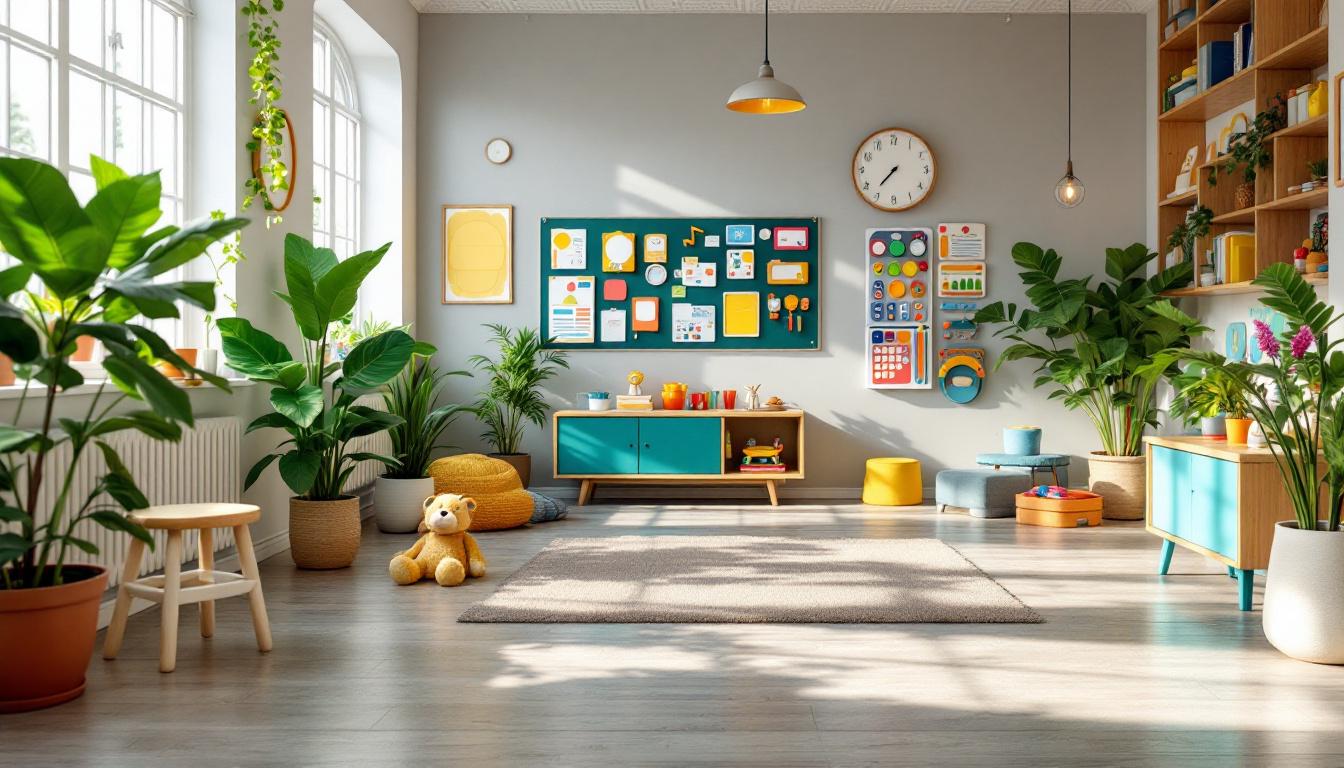Unlocking the Potential of Curiosity through Applied Behavior Analysis
Encouraging curiosity and exploration is essential for the development of children, especially those with autism spectrum disorder (ASD). ABA techniques, including Natural Environment Teaching (NET) and Pivotal Response Treatment (PRT), create enriching environments that motivate children to explore, ask questions, and learn naturally. This article explores how these methods, alongside specific activities, play strategies, and home-based interventions, can cultivate an enduring love for discovery.
Creating Stimulating and Personalized Learning Environments
Use of textures, toys, and sensory materials
A fundamental aspect of ABA therapy for young children, especially those with autism, involves creating a rich sensory environment filled with diverse textures and materials. This includes soft fabrics, squishy foam, smooth stones, and other tactile objects that invite children to explore through touch. These sensory bins and tactile toys help in developing sensory processing skills and tolerance to different sensations, which can often be challenging for children on the spectrum.
Incorporating various textures into play activities not only stimulates the senses but also encourages children to engage actively in their surroundings. For example, using textured puzzles or fabric swatches during playtime can make learning more engaging.
Strategies for encouraging curiosity and exploration using ABA techniques
To foster curiosity and exploration, therapists incorporate specific techniques that motivate children to learn through their natural interests.
Some effective strategies include:
- Creating engaging environments with preferred toys and materials
- Incorporating child-led activities that leverage their interests
- Using positive reinforcement, such as praise or tokens, to reward curiosity and exploration
- Employing visual supports like picture schedules and role-playing to introduce new concepts in a familiar context
- Embedding exploration within play-based activities such as sensory bins and puzzles
These approaches help children develop cognitive and social skills while enjoying their learning process.
Additional sensory exploration activities for children with autism
For further enhancement, activities like nature walks, smelling flowers, observing natural surroundings, and engaging in movement activities with music can contribute to sensory and emotional regulation. These setups provide calming sensory inputs and foster holistic development.
In summary, a thoughtfully designed sensory environment combined with ABA strategies that promote curiosity can significantly support developmental growth. Caregiver involvement and consistent practice help reinforce these skills, making learning both fun and effective.
Emphasizing Naturalistic and Child-Led Learning
How can ABA methods such as Natural Environment Training (NET) and Pivotal Response Treatment (PRT) be applied to foster naturalistic learning and curiosity in children?
Natural Environment Training (NET) and Pivotal Response Treatment (PRT) are dynamic ABA strategies designed to promote learning within natural settings. These approaches focus on making skill acquisition engaging by connecting it to a child's daily routines and genuine interests.
NET encourages children to direct their own learning through spontaneous interactions in familiar environments. Therapists or caregivers embed teaching moments into activities such as play, mealtime, or outdoor exploration. For instance, a child may be encouraged to request an item they want, which naturally involves practicing communication skills in a real-world context.
PRT, on the other hand, emphasizes motivating children through their chosen activities and interests. It encourages children to initiate interactions, fostering independence and curiosity. For example, a child might be prompted to select a toy or activity, which promotes engagement and spontaneous exploration.
Both methods capitalize on intrinsic motivation by using natural reinforcers—such as praise, preferred items, or the satisfaction of completing a task—making learning more meaningful. This environment encourages children to explore, ask questions, and seek new experiences without feeling pressured.
Applying these strategies involves observing a child's interests, then tailoring activities that fit into their routines. For example, during a walk outside, a caregiver might comment on a flower, leading to questions and discussions that build curiosity.
By integrating skill development into genuine contexts, NET and PRT foster curiosity, encourage spontaneous learning, and support the generalization of skills. This naturalistic approach helps children develop not only specific skills but also a love for exploration and discovery in everyday life.
Engaging Children with Interest-Based Activities
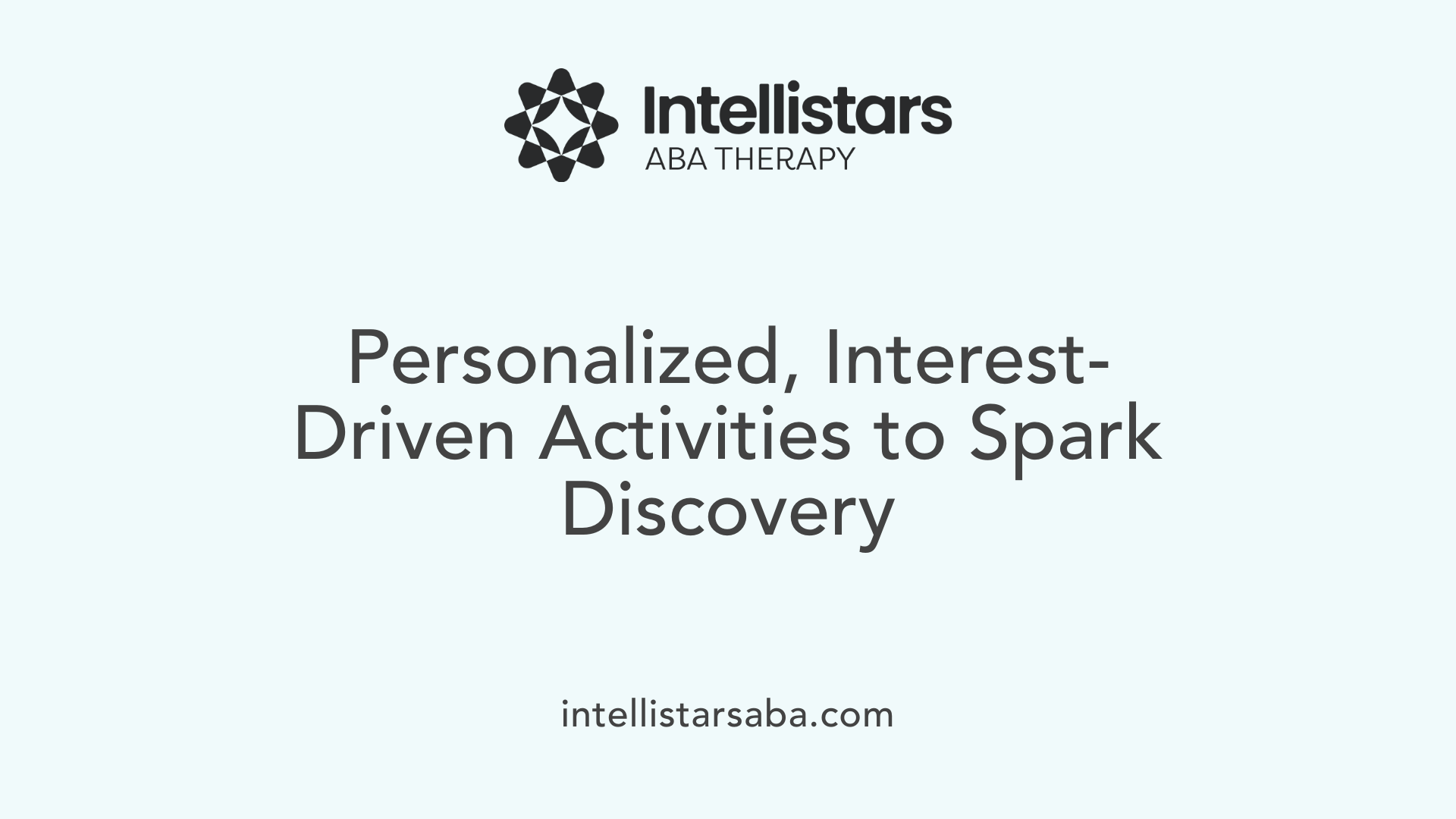 Introducing activities that spark curiosity in children with autism is a vital component of ABA therapy. Sensory experiences like sensory bins filled with different textures, water play, and the use of musical instruments stimulate exploration and sensory processing. These activities help children become more comfortable with various sensations while promoting their curiosity.
Introducing activities that spark curiosity in children with autism is a vital component of ABA therapy. Sensory experiences like sensory bins filled with different textures, water play, and the use of musical instruments stimulate exploration and sensory processing. These activities help children become more comfortable with various sensations while promoting their curiosity.
Play-based tasks tailored to individual interests encourage problem-solving and social interactions. For instance, puzzles, storytelling sessions, role-playing scenarios, and LEGO® challenges engage children in meaningful ways. These activities foster creativity and support the development of communication and social skills.
Visual aids, such as picture cards, short videos, and choice boards, serve as powerful tools to boost motivation and engagement. Offering children options in their activities enhances their sense of control and curiosity. Personalizing activities based on a child's specific interests further increases their motivation to learn and participate.
Reinforcement strategies are crucial in maintaining curiosity-driven behaviors. Immediate praise or tangible rewards can motivate children to explore and learn new skills. Creating a structured yet flexible environment with designated sensory and activity zones encourages safe exploration.
Outdoor experiences like nature walks, touching natural elements, and observing wildlife also significantly stimulate curiosity. These natural and enjoyable experiences provide calming sensory inputs and promote holistic development.
ABA techniques like Discrete Trial Training (DTT) and Natural Environment Teaching (NET) underpin these activities. DTT breaks down skills into small steps with repeated practice and reinforcement. For example, practicing a specific play skill repeatedly in a controlled setting. NET involves child-led learning in real-world contexts—like exploring a garden—making skills more applicable and spontaneous.
Overall, combining sensory activities, play-based tasks, and visual supports within an ABA framework helps foster curiosity, independence, and continuous learning. A supportive, interest-based approach ensures children remain engaged while developing essential skills for growth and daily functioning.
Maximizing Play and Leisure Skills for Curiosity
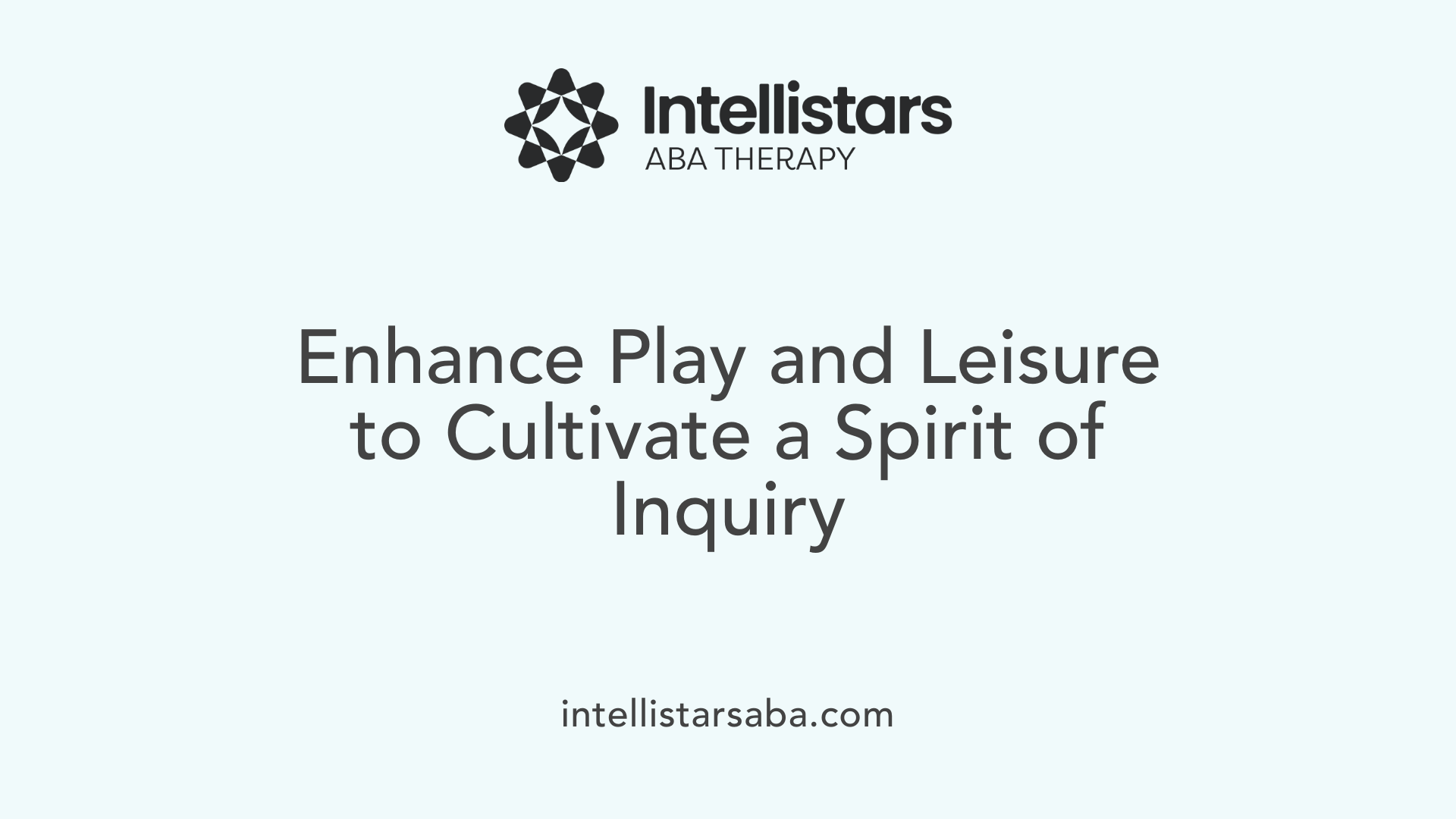
How can ABA techniques be used to enhance play and leisure skills to stimulate curiosity and exploration?
ABA strategies are instrumental in developing play and leisure skills that foster curiosity. By designing structured yet flexible activities, therapists encourage children to explore their environment actively. One effective approach is Natural Environment Teaching (NET), which allows children to learn through interactions in real-life settings.
Incorporating visual supports such as picture cards, visual routines, or prompts guides children during play. These visual tools help them understand what to do next and motivate new play behaviors. Positive reinforcement, like praise or tokens, is used immediately after desired actions, increasing the likelihood of repetition and exploration.
Role-playing and pretend-play activities serve as powerful tools to develop imaginative thinking and social skills. When children practice scenarios with caregivers or therapists, they learn to navigate social interactions and problem-solving in fun, engaging ways.
Creating predictable routines and environments tailored to individual interests reduces anxiety. For example, if a child enjoys puzzles, incorporating puzzle play into daily routines encourages consistent participation and exploration.
Modeling inquisitive behaviors is also vital. When caregivers or therapists demonstrate curiosity by exploring objects or asking questions, children often imitate these behaviors. This modeling nurtures a natural desire to explore and learn.
Open-ended, unstructured play opportunities are essential for nurturing independence and intrinsic motivation. Toys and materials that promote creativity, such as building blocks or art supplies, give children the freedom to experiment and discover new interests.
Overall, ABA techniques like visual supports, reinforcement, modeling, and structured routines work together to create an environment rich in exploration, confidence, and curiosity.
The Power of Toys and Play-Based Tools
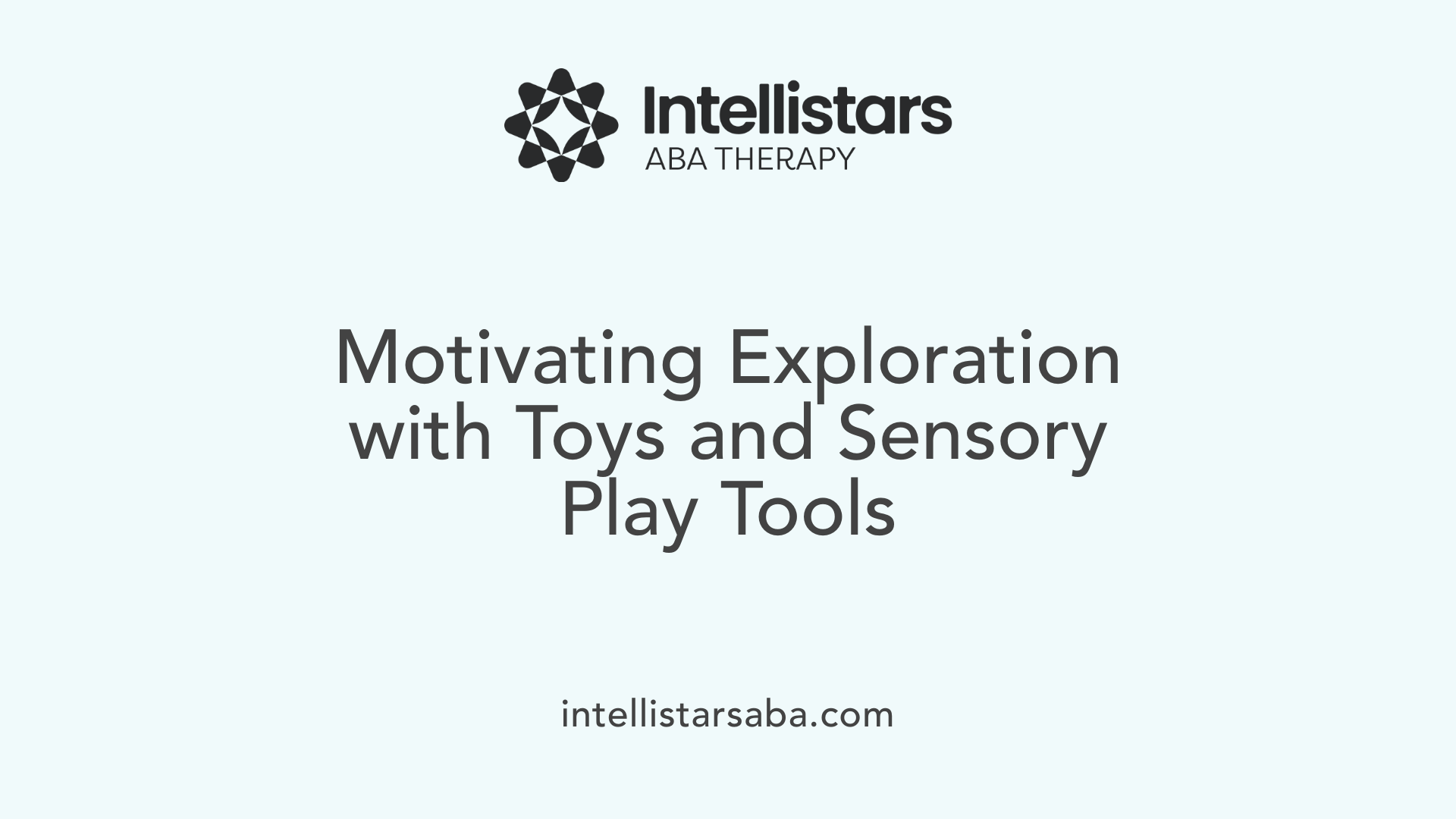
What role do toys and play-based tools play in ABA therapy to motivate exploration and sensory engagement?
In ABA therapy, toys and play-based tools are essential for fostering curiosity, exploration, and sensory development. These tools serve as motivating incentives, encouraging children to actively participate in therapy sessions and explore their environment.
Sensory toys—such as textured balls, squishy items, and vibrating objects—engage tactile, visual, auditory, and proprioceptive senses. They help children process sensory input more effectively, which is crucial for sensory integration and emotional regulation. These toys can also provide calming effects, making children feel secure and supported.
Beyond sensory stimulation, cause-and-effect tools like pop-up toys and simple puzzles help children understand the link between their actions and outcomes. This understanding encourages problem-solving skills and promotes cognitive development.
Furthermore, toys tailored to specific developmental goals—such as fine motor toys, social skills games, or language-promoting activities—are integrated into sessions to boost motor skills, communication, and social interaction.
The strategic use of these tools creates engaging, inclusive environments that support learning and sensory tolerance. This approach reduces anxiety, enhances focus, and increases motivation, making therapy sessions more effective. Overall, toys and play-based tools are vital for making ABA therapy enjoyable, nurturing curiosity, and building essential skills in children.
Supporting Families and Home-Based Implementation

How can ABA strategies be implemented in home-based settings to support curiosity development in children?
Implementing ABA strategies at home is an effective way to nurture curiosity in children with autism. One of the most useful approaches is Natural Environment Teaching (NET), which involves embedding learning opportunities into everyday routines and activities such as play, cooking, or outdoor outings. This method encourages children to explore and ask questions naturally, facilitating spontaneous learning.
Positive reinforcement also plays a crucial role. When a child shows interest in a new object or activity, immediate praise or rewards can motivate them to engage further, creating a positive association with discovery and exploration.
Breaking complex skills into small, manageable steps with the help of prompts and reinforcement helps children feel confident in their abilities. For example, a step-by-step approach may involve initially guiding a child to touch a new sensory object, then gradually reducing prompts as they become more independent.
Creating a stimulating environment at home is vital. Use sensory bins filled with different textures, like soft fabrics or squishy foam, to encourage tactile exploration. Incorporate matching games, puzzles, and reading stories with vivid pictures that pique curiosity and support vocabulary development.
Structured routines that include varied activities help maintain consistency, making it easier for children to anticipate and participate in learning. Combining these activities with visual supports, such as picture schedules or cue cards, can further enhance understanding and independence.
Overall, embedding ABA techniques into daily life—through meaningful activities, consistent routines, and positive reinforcement—fosters a curious, engaged mindset in children while promoting their overall development and well-being.
Applying Evidence-Based ABA Practices for Exploration
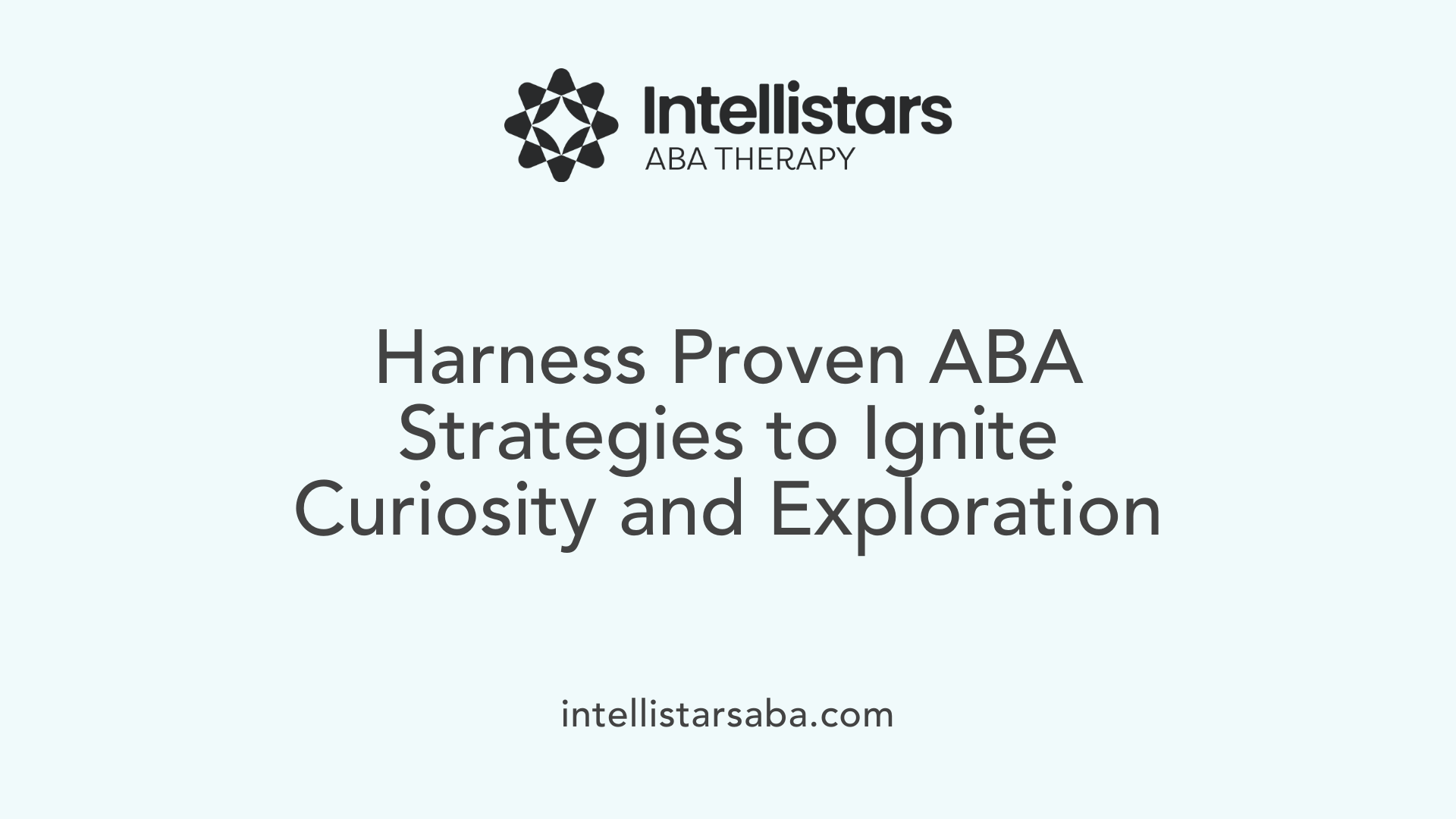
What evidence-based ABA practices can be used to stimulate curiosity and exploration in children with developmental disorders or autism spectrum disorder?
Utilizing proven ABA strategies is essential in encouraging curiosity and exploration among children with ASD. One highly effective approach is Natural Environment Teaching (NET), which involves teaching in real-life settings where children naturally explore and interact. This method promotes spontaneous learning and generalization of skills.
Pivotal Response Treatment (PRT) is another powerful technique. It focuses on motivating children by leveraging their interests and using child-initiated activities to foster engagement. PRT encourages children to explore their environment through play, language, and social interaction.
Personalized reinforcement systems also play a crucial role. By providing immediate, meaningful rewards—such as praise, tokens, or desired activities—parents and therapists motivate children to participate and explore new concepts.
Engagement in sensory and cognitive exploration is supported through specific activities like matching games, sensory bins, and puzzles. These activities stimulate curiosity by addressing sensory needs and encouraging problem-solving.
Incorporating language-rich environments, pretend-play, and social stories enhances social and communicative exploration. These activities help children understand social cues and inquire about their surroundings.
Crucially, all interventions should be guided by thorough data collection. This ensures that strategies are tailored to each child's unique needs and interests, maximizing their potential for exploration and learning.
In summary, evidence-based ABA techniques such as NET, PRT, individualized reinforcement, sensory activities, and structured play are scientifically supported to boost curiosity and foster developmental gains in children with autism.
The Role of Play in Nurturing Curiosity Through ABA
How does play therapy integrate with ABA to nurture curiosity and exploration in children?
Play therapy is a vital component of ABA programs, especially designed to foster curiosity and exploration. By creating engaging, child-led activities, therapists encourage children to participate in spontaneous and imaginative play, which naturally promotes curiosity. These activities give children the freedom to express themselves through toys, role-playing, and social interactions, helping them develop a positive attitude toward exploring new concepts.
Within ABA, structured play sessions are tailored to stimulate communication, social skills, and emotional regulation. These sessions often combine both organized and free-play elements, providing a safe environment where children can experiment, learn, and grow. Such strategies help children feel secure and motivated, which enhances their interest in discovering their surroundings.
Integrating play with ABA strategies also leverages neuroplasticity, supporting brain development that adapts to new experiences. This dynamic approach makes learning engaging and reinforces behaviors driven by curiosity. Using play-based strategies thus not only targets specific developmental milestones but also nurtures a natural desire in children to understand and explore their environment.
Overall, blending play therapy with ABA creates a comprehensive, enriching experience that encourages children to pursue curiosity and discovery, laying a foundation for lifelong learning and emotional health.
Cultivating Lifelong Curiosity through Consistent Practice
Through a combination of tailored ABA techniques, interest-based activities, and engaging environments, children can develop a genuine curiosity and love for exploration. The integration of naturalistic teaching methods like NET and PRT ensures learning is relevant and motivating. By incorporating play, sensory tools, and caregiver involvement at home and in therapy, children are empowered to become confident explorers. Ongoing data collection and personalized strategies further optimize outcomes. Nurturing curiosity not only enhances immediate developmental skills but also lays a foundation for lifelong learning, independence, and joy in discovering the world around them.
References
- In-Clinic ABA Therapy in Chicago - Spectrum of Smiles
- Fun Activities for Kids with Autism | Blossom ABA Therapy
- 10 Engaging ABA Activities for 2 Year Olds to Boost Development ...
- 7 Real-World ABA Therapy Examples, Activities & Their Benefits
- Targeted ABA Support & Strategies for Difficulties
- Enhancing Play and Leisure Skills in Individuals with Autism
- Home-Based ABA Therapy to Prepare Your Toddlers For School
- Top ABA Therapy Techniques for Children with Autism | Ab Spectrum
- The Top 10 Reasons Children With Autism Deserve ABA - PMC

